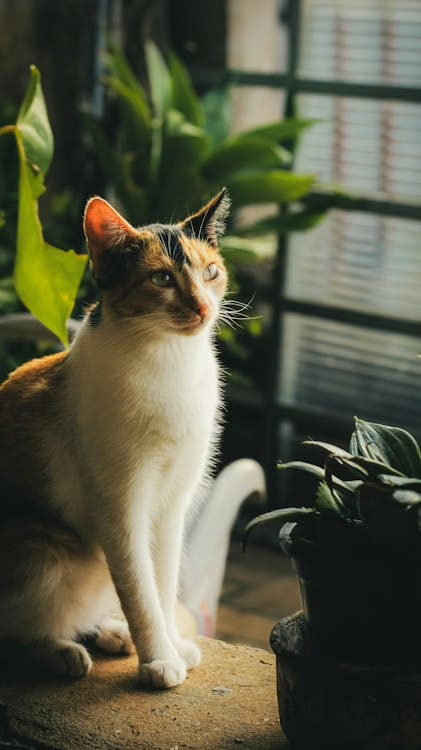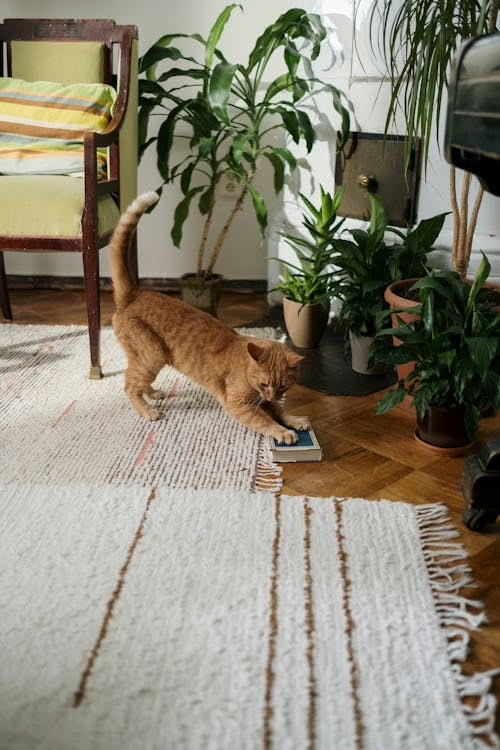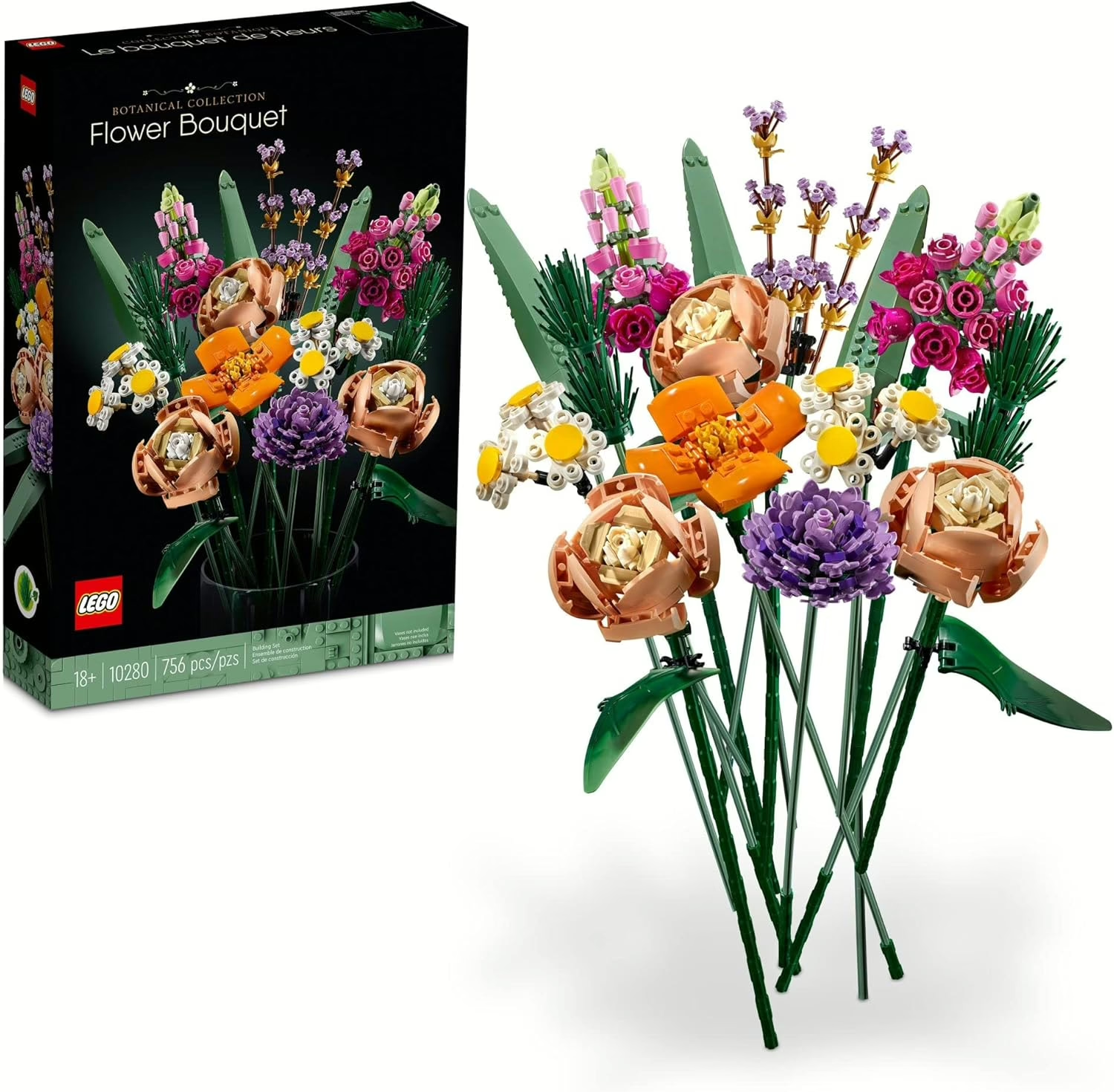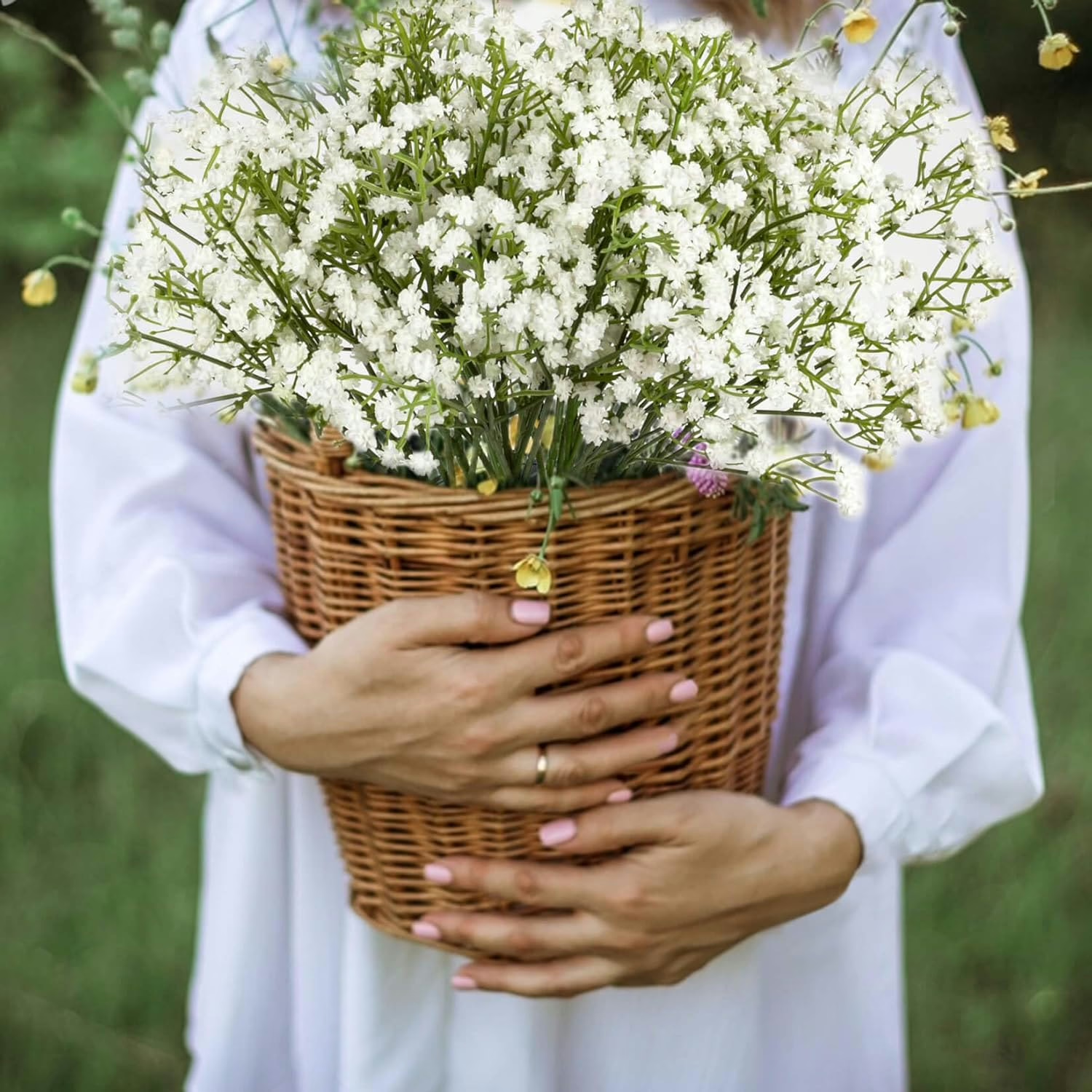Welcome to Worry-Free Greenery: Plants Not Toxic to Cats
If you’re a cat owner who also loves decorating with plants, you’ve likely faced a dilemma: how to enjoy the beauty of greenery without risking your pet’s health. Many common houseplants, while stunning, are unfortunately toxic to cats and can cause anything from mild irritation to serious illness.
That’s where plants not toxic to cats come in — and artificial options make the experience even safer and more convenient. By choosing high-quality faux greenery, you can enjoy the soothing effect of lush indoor plants while knowing your feline companion is safe.
In this guide, we’ll walk you through everything you need to know about decorating with plants not toxic to cats. We’ll explore why artificial greenery is the ideal solution for pet-friendly homes, review the best faux plant picks for cat owners, and share expert styling tips for a space that’s both beautiful and pet-safe.
Let’s dive in and discover how you can create a stylish, green environment without ever compromising your cat’s well-being.
Table of Contents
Understanding Plant Toxicity in Cats
Before we dive into specific plants not toxic to cats, it’s important to understand what makes many common houseplants hazardous in the first place. Cats are naturally curious, often nibbling on greenery around the house. While it might seem harmless, certain plants can pose serious health risks if ingested—even in small amounts.
According to the ASPCA’s list of toxic and non-toxic plants, popular choices like pothos, lilies, philodendrons, and peace lilies can be toxic to cats. Symptoms of poisoning may include vomiting, drooling, diarrhea, lack of appetite, and in severe cases, kidney failure or tremors.
Even if you place your greenery out of reach, many cats will eventually find a way to explore. That’s why prevention is better than worry. Replacing high-risk plants with plants not toxic to cats is the safest and most stress-free approach—especially when you have artificial alternatives that look just as stunning.
How to Know If a Plant Is Toxic to Cats
The easiest way is to cross-reference any live or artificial plant names with official databases like the ASPCA’s searchable guide. If you’re buying online, especially from big-box retailers, be cautious: many retailers don’t list plant safety details. That’s another reason artificial options can be smarter for pet-friendly homes.
Real vs. Artificial: Why Faux Wins for Pet Households
Even so-called “plants not toxic to cats” might cause digestive issues if eaten in large quantities. Faux plants offer peace of mind because they completely eliminate ingestion risk while still delivering the visual benefits of greenery. Plus, there’s no need to worry about fertilizers, pesticides, or dropped leaves—all of which can pose hazards.
At FindGreenery.com, we recommend incorporating premium-quality artificial greenery if you’re looking to strike the perfect balance between a stylish home and a safe space for your furry companion.
Bonus Tip: Watch for Pet-Friendly Potting Materials
Even if the plant itself is fake, check that the materials used in the pot, moss, or filler aren’t treated with chemicals or scented additives. Always opt for trusted retailers or product listings that include pet-safe descriptions—or better yet, stick to our curated picks below.

The Benefits of Artificial Plants for Pet Owners
If you’re a design-loving cat parent, finding plants not toxic to cats can feel like walking a tightrope. Thankfully, there’s a smarter, safer alternative: artificial greenery. Today’s faux plants are more realistic, more durable, and more cat-proof than ever before—making them the perfect match for pet-friendly homes.
1. 100% Pet-Safe by Design
With artificial greenery, you never have to second-guess whether your plant is safe for your cat. Since there’s nothing organic to ingest, you eliminate the risk of toxic reactions entirely. This makes them ideal for households with playful or curious cats who like to nibble on leaves or knock over pots.
Even popular plants not toxic to cats can be problematic if chewed or digested excessively. Artificial alternatives completely remove that risk—no vet bills, no surprises, no worry.
2. Low Maintenance and Always Fresh
Forget watering schedules, wilting leaves, or cleaning up dirt. Artificial plants require no sunlight, no pruning, and no attention. They’re perfect for busy households, dark rooms, or anyone without a green thumb. You get all the beauty of live plants—minus the hassle.
This is especially helpful for cat owners who are often busy and want a stress-free decor solution. A quick dusting once in a while is all it takes to keep your greenery looking like new.
3. No Pesticides, Fertilizers, or Mold
Even with plants not toxic to cats, things like fertilizers, pest sprays, and moldy soil can pose hidden dangers. Artificial plants don’t need any of those chemical treatments—making them a safer and cleaner choice for both pets and people.
You also avoid potential messes from spilled soil or water, which can attract mold or bacteria over time. Faux plants are clean, sealed, and low-risk.
4. Long-Term Cost Savings
Although high-quality artificial plants can have a slightly higher upfront cost, they last for years—sometimes even decades—without fading or deteriorating. That means no repeat purchases, no replacements after pet accidents, and no emergency plant shopping before guests arrive.
Plus, they won’t attract pests or require expensive specialty planters. The total cost of ownership is significantly lower than with live plants, especially if you consider the cost of replacing chewed or poisoned greens.
5. Beautiful and Versatile Design Options
Today’s artificial plants are designed with aesthetics in mind. Whether you love minimal, boho, modern, or rustic interiors, there’s a faux plant that fits your style. Even better? You can place them anywhere: dark corners, bathrooms, shelves, or even pet-level spaces without a second thought.
When you’re choosing plants not toxic to cats that also align with your style, artificial options offer more flexibility than ever. From cascading vines to sculptural succulents and statement trees, the possibilities are endless.

Top 5 Artificial Plants Safe for Cats
Now that we understand why artificial greenery is ideal for pet-friendly homes, let’s look at some of the best options currently available. These plants not toxic to cats are not only safe by design—they’re also stylish, realistic, and incredibly easy to maintain. Below are our top 5 faux plant picks that look amazing and won’t put your cat at risk.
In that case, that is where our plants not toxic to cats recommendations come to play:
1. Nearly Natural Dracaena Decorative Silk Plant
This 4-foot artificial dracaena tree brings lush, tropical style to any room without a single toxic leaf. Its thick, lifelike foliage and sturdy decorative planter make it perfect for corners, entryways, or behind the couch—no watering, no mess, no danger to pets.

2. Dracaena Planter Artificial Lifelike Tree
If you want a more modern take on dracaena, this option from VIVATREES is beautifully minimalist. With clean lines, a matte pot, and layered foliage, it’s perfect for bedrooms, home offices, or reading nooks. Plus, it’s a guaranteed safe choice for homes with curious cats.

3. Artificial Succulent Assorted Decorative Plants
Short on space? These small, stylish succulents are great for shelves, desks, and windowsills. Their compact size means they’re less likely to get knocked over by your cat, and their realistic textures add charm to any room. They’re a top-tier choice when sourcing plants not toxic to cats.

4. LEGO Artificial Flower Bouquet Building Kit
This one’s a surprising favorite among plant lovers and cat owners alike. The LEGO Flower Bouquet isn’t just a fun and creative DIY activity—it also results in a vibrant, customizable artificial floral arrangement that’s completely pet-safe. Since it’s made of solid plastic, there’s no risk of ingestion or falling leaves.
Perfect for coffee tables, kitchen counters, or bookshelves, it adds a burst of color with zero toxicity concerns. Plus, unlike live bouquets, it never wilts and requires no cleanup.

5. Sukh Artificial Gypsophila Decorative Flowers
Looking for soft, delicate, and natural-looking faux flowers? This Gypsophila bundle checks every box. These are fantastic for minimal decor styles and can be arranged solo in a vase or mixed into larger bouquets. Since they’re made of silk-like material with no harmful treatments, they make ideal plants not toxic to cats.
Use them in bedrooms, bathrooms, or on dining tables for a gentle floral statement that won’t stress out your cat or your wallet.

Each of these products is designed with your pet’s safety in mind. By choosing these plants not toxic to cats, you’re not just decorating—you’re creating a comfortable and worry-free environment where both you and your cat can thrive.
Styling Tips for Incorporating Artificial Plants
Once you’ve chosen plants not toxic to cats, the next step is making them look amazing in your space. The beauty of artificial greenery is how flexible and low-maintenance it is—perfect for designing around both style and safety.
Here are some proven styling tips to help you place your faux plants creatively throughout your home—without worrying about your curious feline knocking over a pot or chewing on the leaves.
1. Layer Heights for Visual Interest
Mix tall plants like artificial trees with smaller tabletop succulents to create depth and dimension. For example, place your VIVATREES Dracaena in a bare living room corner, then complement it with small potted succulents on a nearby shelf or coffee table. This layering effect adds movement and life to a space, all with plants not toxic to cats.
2. Use Elevated Surfaces (Where It Makes Sense)
While you don’t need to worry about toxicity with faux plants, it’s still smart to keep delicate arrangements—like the Gypsophila flowers—on elevated shelves or ledges to avoid paw swipes. Use decorative risers, wall-mounted shelves, or even tall side tables to lift lighter pieces to eye level.
3. Choose Planters That Match Your Aesthetic
Don’t overlook the power of a beautiful planter. For a modern space, go with matte white or charcoal ceramic. For a cozy or boho room, try woven baskets or natural-toned pots. Your plants not toxic to cats will blend seamlessly into your design, enhancing rather than distracting from your room’s vibe.
Bonus tip: Use weighted planters or add pebbles to the base to give your pots stability in case of feline mischief.
4. Incorporate Faux Plants into Existing Decor
Group your artificial greenery with books, candles, and art objects to build stylish vignettes. Place mini succulents on a bathroom shelf beside skincare bottles, or tuck small arrangements between framed photos and lamps. These pairings help your greenery feel intentional—not like an afterthought.
Don’t be afraid to style in unexpected places either. Faux plants are perfect for areas where real plants struggle—like dark hallways, guest bathrooms, or above kitchen cabinets.
5. Rotate and Refresh Seasonally
Just because your artificial plants won’t die doesn’t mean your styling should stay static. Try swapping locations every few months to freshen things up. You can also accent your faux plants with seasonal decor—like adding fairy lights in winter or fresh faux blooms in spring—for a dynamic, ever-evolving look.
6. Go Minimal in Pet Zones
If your cat has dedicated play or sleep areas, keep those zones clutter-free. Use one larger faux plant instead of many smaller ones. This keeps things simple, safe, and stylish—especially important when decorating with plants not toxic to cats.

Maintenance Tips for Artificial Plants
One of the biggest advantages of using plants not toxic to cats—especially artificial ones—is how little upkeep they require. Still, if you want your faux greenery to keep looking fresh and realistic, a little maintenance goes a long way.
Here are some simple, pet-safe tips to keep your artificial plants dust-free, vibrant, and perfectly styled for the long haul.
1. Dust Regularly for a Fresh Look
Just like any surface in your home, faux plants collect dust. And while your cat probably doesn’t mind, dusty leaves can dull the beauty of even the best artificial greenery. Use a microfiber cloth or a feather duster once every 1–2 weeks to gently clean the leaves and stems.
For intricate flowers like the LEGO bouquet or the Gypsophila bundle, use a soft makeup brush or paintbrush to get between the crevices without damaging the structure.
2. Avoid Harsh Cleaners
Always avoid using chemical sprays, polishers, or scented products on your artificial plants. These substances can leave a residue that dulls the finish—and if your cat happens to rub against them, it could cause skin or respiratory irritation.
If needed, a light solution of warm water and a drop of mild dish soap works well. Dampen a soft cloth and wipe down the leaves. Make sure to dry the plant thoroughly to prevent mildew, especially around fabric-based arrangements.
3. Use Compressed Air for Delicate Pieces
Miniature succulents or fine-leafed arrangements like the plants not toxic to cats featured in this blog often have tight spaces that collect debris. A quick burst of compressed air (the kind used to clean computer keyboards) can lift out the dust without disturbing the design.
4. Rotate to Prevent Fading
While artificial plants are UV-resistant, constant direct sunlight can eventually cause fading. To prevent this, rotate your plants every few weeks. Moving your greenery also gives you the chance to refresh your styling, making your decor feel new with minimal effort.
This is especially useful in sun-drenched rooms like bay windows or balconies where you want to display plants not toxic to cats safely and beautifully.
5. Refluff and Reshape as Needed
Over time, artificial stems can flatten or bend out of shape. Gently bend or twist the stems back into position using your hands. For larger items like the Dracaena trees, you can “fluff” the leaves and branches to add volume and realism.
If your plant looks limp or uneven after a few months, don’t toss it—just give it a bit of attention and it’ll bounce right back.
6. Store With Care Between Seasons
If you switch out your faux decor for seasonal styling, store your off-season plants in cool, dry containers. Wrap delicate pieces in tissue paper and avoid stacking items to prevent flattening. Label your storage bins so your favorite plants not toxic to cats are easy to find when you’re ready to redecorate.
Whether it’s a silk bouquet or a potted tree, proper storage extends the lifespan of your investment and keeps your home looking sharp year-round.
Frequently Asked Questions
What types of plants are not toxic to cats?
Some of the best-known live plants not toxic to cats include spider plants, areca palms, and Boston ferns.
However, using realistic artificial alternatives ensures total peace of mind—especially in homes with curious felines.
Can cats still get sick from fake plants?
While high-quality faux greenery poses no toxic risk, low-grade products made with dyes, glues, or chemical sprays may still be irritating. That’s why we only recommend artificial plants not toxic to cats from reputable sellers with safe materials.
Where should I place artificial plants in a pet-friendly home?
Faux plants are incredibly versatile! Use them on bookshelves, windowsills, coffee tables, and even in bathrooms. Just avoid placing fragile pieces in high-traffic areas your cat may jump onto or knock over.
How often should I clean artificial plants?
Every 2–3 weeks is ideal. Dust can build up quickly, so keeping your plants not toxic to cats looking fresh with a light wipe or duster helps them stay vibrant year-round.
Are artificial plants better than real ones for pet owners?
In many cases, yes. With artificial greenery, you eliminate the risk of toxicity, soil mess, and the need for constant maintenance—making them a safer and more convenient choice for cat households.
Conclusion: A Safer Way to Green Up Your Space
Living with a cat doesn’t mean giving up beautiful indoor greenery. By choosing plants not toxic to cats—particularly artificial ones—you can enjoy vibrant, low-maintenance decor that never compromises your pet’s health or your home’s aesthetic.
Here’s a quick recap of why artificial greenery is the ultimate solution for pet-friendly homes:
- ✅ 100% non-toxic, zero risk of ingestion
- ✅ No mess from soil, pests, or falling leaves
- ✅ Easy to clean, rotate, and restyle seasonally
- ✅ Affordable long-term investment
- ✅ Stylish options for every room and decor style
We’ve highlighted five standout faux plants that are not only safe for cats but also elevate the ambiance of your living space. Whether you’re decorating a shelf, corner, or centerpiece, there’s a perfect, pet-safe plant to match your vision.
Ready to transform your home? Explore the links above and bring home your favorite plants not toxic to cats today. Your cat—and your decor—will thank you.





Leave a Reply
You must be logged in to post a comment.